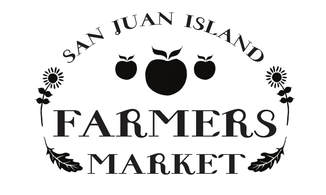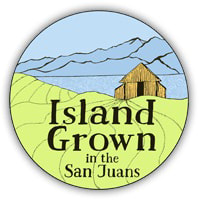supplemental nutrition programs
Supplemental Nutrition and Assistance Program (SNAP)
SNAP, formerly known as food stamps, is available to people who have a gross income at or below 130% of federal poverty level or are earning less than $2,665 a month ($31,980/ year)for a family of 4. As of 2017 San Juan County has 887 clients enrolled in SNAP. Clients receive an Electronic Benefits Transfer (EBT) Card which allows them to purchase foods at authorized retailers such as: bread, cereals, fruits, vegetables. meat, fish, poultry, dairy products, and eggs. In addition seeds and plants which produce food for the household to eat are also eligible.
SJI Farmers Market EBT
The SJI Farmers Market started its EBT program in May 2017. During the market season from May to December the market had $1,200 in EBT sales. Since 2017 was the first year processing EBT, the market expects to see an exponential increase in 2018 and beyond. To use EBT customers go to the market manager table and swipe their card for the amount they think they will spend. Customers can charge any amount on their EBT cards and in exchange they receive market bucks that can only be used for EBT approved food items (https://www.fns.usda.gov/snap/eligible-food-items). These EBT market bucks come in $1, $5, and $10 denominations and never expire. For 2018, we hope to increase our SNAP customers and double the redemption rate for EBT customers at the market. We hope to do this through ramping up our visibility and marketing. Here are some ways to attract SNAP customers at the farmers market, as outlined on the USDA website: https://www.fns.usda.gov/ebt/attracting-snap-customers-your-farmers-markets
Soroptimist International FMNP Program:
In partnership with the local chapter of Soroptimist International, the SJI Farmers Market disperses two forms of vouches that sponsor the Farmers Market Nutrition Program (FMNP):
- Soropti-bucks for WIC clients and Senior Women
- In 2017, $2,650 was redeemed for WIC/SFMNP
WIC Farmers Market Nutrition Program is part of the Special Supplemental Nutrition Program for the Women, Infants, and Children (WIC) Program. It is run by the Washington State Department of Health. The WIC Program provides:
- Healthy foods,
- Nutrition education, and
- Referrals to health and other social services.
- Program Goals:
- More info: https://www.doh.wa.gov/YouandYourFamily/WIC/FarmersMarket
- Expand the awareness and sales at farmers markets and farm stores.
- Provide fresh, healthy, unprocessed, locally grown fresh fruits, vegetables, and cut herbs to WIC families and low-income seniors.
- Program Goals:
San Juan County Population Data
According to 2015 Census Bureau data the total population is approximately 16,252. 31% of residents are over the age of 65, and children under 18 make up 14% of the population. 12% of the population lives below the Federal Poverty Level (FPL) of $24,600 a year. Approximately 6% of the population is Hispanic, and the Hispanic population growth rate has increased 178% since 2000.
In San Juan County 8% of households use SNAP benefits. The 2015 State of Children and Families Report found 17% of children under age six live in extreme poverty in San Juan County. A 2015 Prosperity Project Report found that 51% of single working mothers in San Juan County with children under age five live at or below the Federal Poverty Level (FPL). In addition, 38% of survey respondents in San Juan County reported skipping a meal in the last 12 months because they were unable to afford food. According to the 2013 Island Hospital Community Health Needs Assessment, 19.6% of children under age 18 in San Juan County live in poverty and 21% of adults are uninsured. One in five adults is considered obese.
Orcas Power and Light Cooperative (OPALCO), which provides subsidized utility programs for San Juan County, conducted a needs assessment in 2015 and found 1500 households (~3000 residents) were at or below 150% of the FPL ($36,900/ year) and over 20% of households qualifying for low income programs had children under age 18 years.
There are 1,592 enrolled in the WIC program for San Juan County and 86% are working families.
The San Juan Island School District reports 384 students qualifying for free or reduced lunches, 49.1% of students in the District. In San Juan County the relatively high cost of housing, transportation, and affordable childcare make it difficult for working families to meet basic needs.

